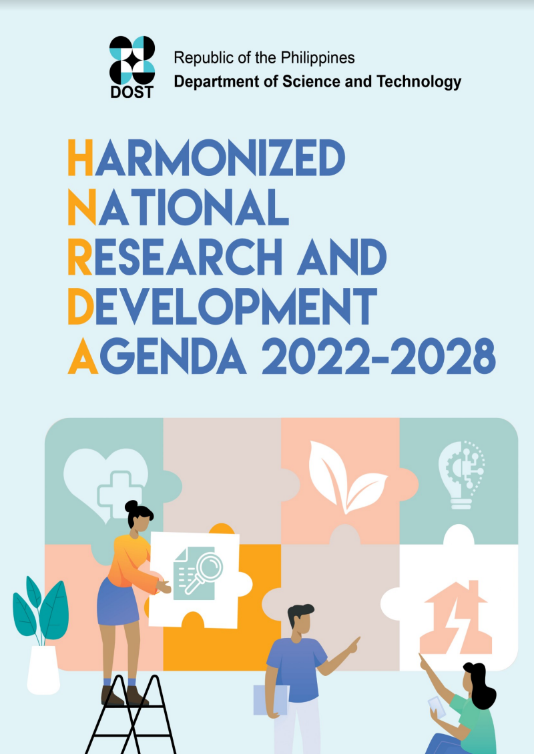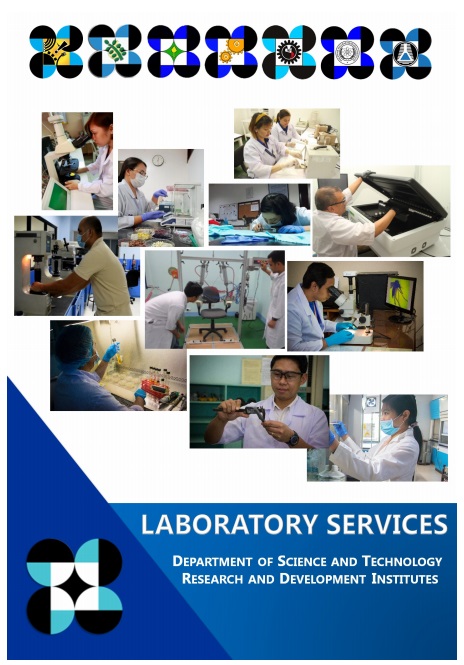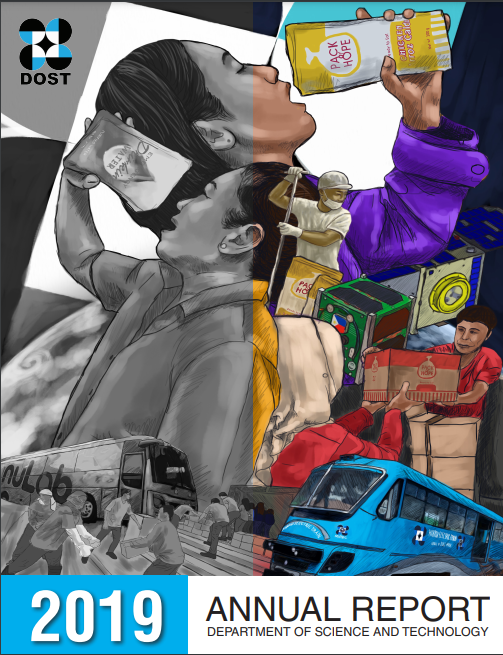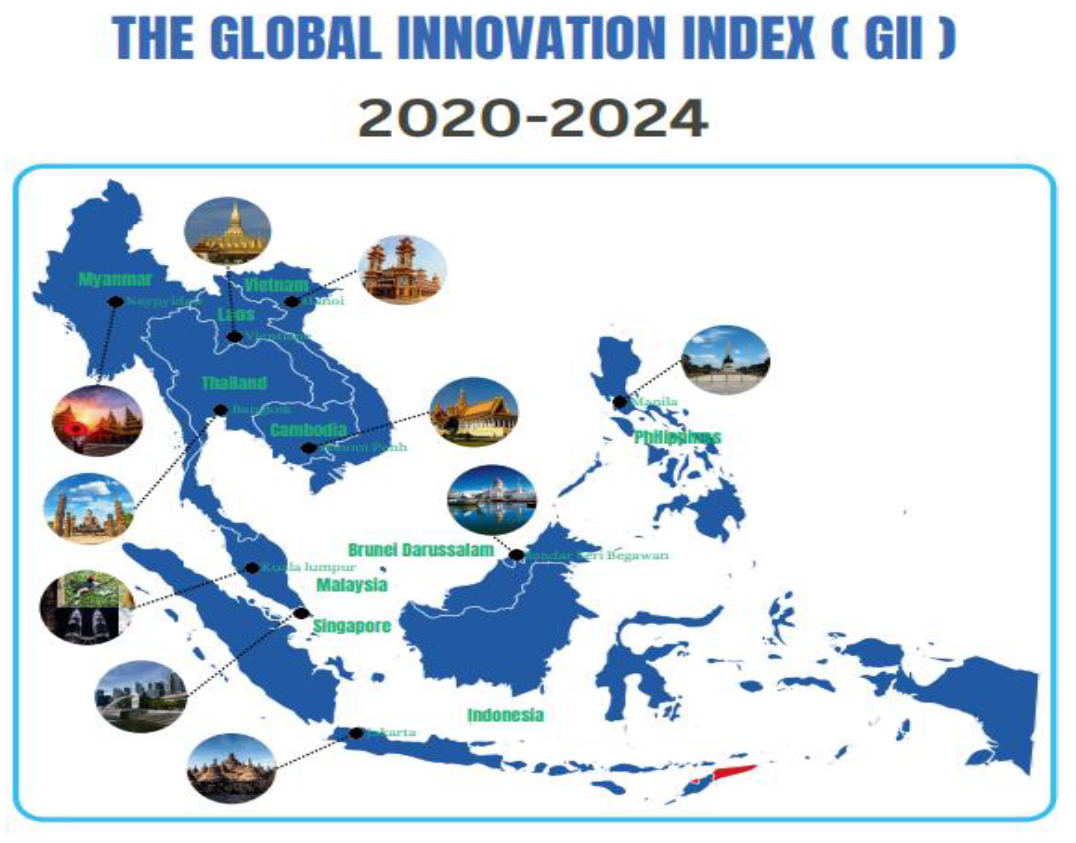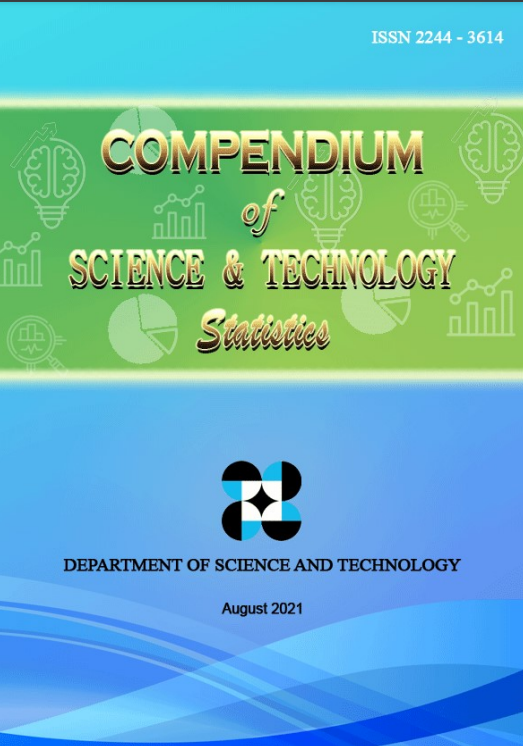Bacteria may help address water pollution
- Details
- Hits: 3620
Certain types of bacteria may help in waste water cleanup, according to a Department of Science and Technology funded study.
The team headed by Prof. Arlene Llamado of the University of the Philippines Los Baños isolated five bacteria cultures from soils of an abandoned mine site in Mogpog, Marinduque to determine if these can form biofilms. Then the team assessed the bacteria’s potential in wastewater treatment applications.
Biofilms are the slimy substances secreted by certain types of bacteria, just like the slime on un-brushed teeth or the film on top of left-over soup. In hospital settings, biofilm-forming bacteria are notorious in spreading hospital-acquired infections because they are resistant to antibiotics and cleaning agents.
However, the researchers wanted to take advantage of the ability of microorganisms to form biofilms because they are negatively charged therefore they can attach to positively charged metal ions.
“By the simple idea of negatively charged polymers attaching to positively charged ions, we actually have a potential to remove heavy metal ions from waste water,” explained Prof. Lllamado.
She further explained that they collected samples from a mined out site where there is low concentration of organic elements and high concentration of copper, because they expected that bacteria living in these soils would have resistance to heavy metals.
All of the bacteria samples isolated from the site exhibited ability to produce biofilms. Further evaluation showed that all of these isolates were capable of removing heavy metals in water-copper solution. The planktonic cells of each bacterial isolate ate up the copper within six hours of contact time.
Since actual wastewaters may contain multiple metals, the team also tested the isolates in mixed metal solution containing copper, cadmium, lead, and zinc. Results revealed that three out of the five isolates decreased their efficiency in removing copper when exposed to mixed metal solution. Interestingly, one of the isolates called NV17 has shown dramatic increase in its ability to remove copper in multi-metal solution. However, Professor Llamado said that the reason for this occurrence was not yet tackled in the study.
Subsequent analysis of the bacteria revealed that the isolates NV112 an NV1A are species of Rhodococcus; NV17 and R11 are species of Bacillus, and NV2A is Pseudomonas sp.
Prof. Llamado revealed that further study is underway to test the ability of these bacterial isolates in removing metals in actual wastewater.
DOST presents road train & other technologies in innovation congress
- Details
- Hits: 4732
In a recent innovation congress, Department of Science and Technology Secretary Montejo introduced the Road Train, one of the DOST’s proposed advanced transport systems that will help ease traffic conditions in Metro Manila. He said the Road Train will be an effective means of transporting people on the road.
“(The Road Train is) not that high-tech, but it is innovative in its strategic use of existing applied technologies to introduce (a new) mass transit system, which can resolve (our traffic problem), or at least part of it,” Secretary Montejo said.
He added that the technology is an offshoot of system development of the Automated Guideway Transit or AGT, an elevated rail transport considered as the first locally developed train now undergoing functional tests at the University of the Philippines Diliman.
The innovation congress, dubbed “ICon” and held recently at the Bonifacio Global City in Taguig City, also showcased other DOST innovations such as Project NOAH, along with the latest advances in car manufacturing technology and design, gadgets developed by various companies, and other smart devices.
ICon is a joint activity of the DOST and the Association of Vehicle Importers and Distributors or AVID.
The ICon spotlights the country’s brand for innovation called “Filipinnovation” and promotes DOST’s advocacy for a “Smarter Philippines”. Participants to the event include the academe, businessmen, and diplomats, along with the biggest names in the car industry.
“The ICon is quintessentially a public-private partnership that denotes a very important theme at the core of our work in DOST—innovation”, said Secretary Montejo.
“Innovation is the key enabler of productivity, a driver of growth in successful economies, and, in a very concrete sense, at the heart of economic development,” he added.
AVID President Ma. Fe Perez-Agundo likewise said that the ICon not only aims to foster a mindset of innovation but is also an effort to elevate the country in the Global Competitive Index.
“We want the Philippines to become a recognized player in the global arena,” she said.
The ICon showcased various facets of innovation including megatrends, technopreneurship, technology business incubators, government policies and programs on innovation, and “smart cities”, a concept conceived and introduced to the world by IT giant IBM.
Among the high-profile speakers were National Academy of Science and Technology President and former DOST Secretary Dr. William Padolina, who talked about the latest researches in hard sciences and government initiatives; Rappler Chief Executive Officer (CEO) Maria Ressa, who expounded on seeing the world in “God’s Eye View” through social media and the imperative of harnessing this power; IBM Philippines Chief Technologist Lope Doromal, Jr. who explained the principle of Smarter Cities (which served as platform for DOST’s Smarter Philippines Program); Integrated Micro-Electronics, Inc. CEO Arthur Tan who discussed global megatrends, convergence, and pervasive connectivity; and Hyundai Chief Design Manager Casey Hyun who enlightened the audience on the rudiments of automobile design and some of the most recent developments in this area.
The Icon’s second day emphasized role of media in science and technology (S&T) and trends in S&T communication. Among the speakers were DOST Science and Technology Information Institute Director Raymund E. Liboro, Representative Angelo Palmones, Former ASEAN Foundation Director Dr. Filemon Uriarte, Jr., Business Mirror Science Editor Ms. Lynn Resurreccion, and National Research Council of the Philippines President and National Scientist Lourdes J. Cruz, among others.
All ICon participants wore radio-frequency identifications produced by Itemhound Corporation, one of the successful beneficiaries of DOST’s technology business incubator program.
(Photos below)

Pushing the “launch button” for the opening of the Innovation Congress or ICon are Department of Science and Technology Secretary Mario G. Montejo and Association of Vehicle Importers and Distributors (AVID) President Ma. Fe Perez-Agundo, together with other AVID officers. The high-profile event placed the spotlight on Filipino innovation, as key leaders from various sectors and businesses shared their ideas about harnessing the power of innovation in driving the country’s economy. ICon showcased the newest smart devices and technologies for a broad range of industries including the latest advancements in car design and manufacturing through a Mobility Expo. The ICon ran from April 5 – 7 at the ICon Tent in Bonifacio Global City, Taguig. (Photo by Henry A. De Leon/ Text by George Robert Valencia III, S&T Media Service, DOST-STII)

DOST Secretary Mario G. Montejo introduces another solution to Metro Manila’s vehicular traffic problem: the DOST Road Train. This train runs on the road and no longer on elevated railway. Secretary Montejo said that this new proposed transport system can service up to 650,000 commuters on EDSA and will complement the main thoroughfare’s existing traffic system. A locally developed technology and made of locally available materials, the road train is a perfect example of a fully Filipino innovation, much like the DOST Automated Guideway Transit, said Secretary Montejo. (Photo by Henry A. De Leon/ Text by George Robert Valencia III, S&T Media Service, DOST-STII)

IBM Philippines Chief Technologist Lope Doromal, Jr. presents the concept of Smart Cities originally conceived and developed by the global company. The concept harnesses the power of ICT in an increasingly interconnected, instrumented, and intelligent landscape or environment. Smart Cities also serves as a platform for DOST’s Smarter Philippines Program, which was launched in Davao City February this year. (Photo by Henry A. De Leon/ Text by George Robert Valencia III, S&T Media Service, DOST-STII)

Integrated Micro-Electronics, Inc. (IMI) CEO Arthur Tan talks about global megatrends, convergence, pervasive connectivity, and some smart devices the company is now developing. (Photo by Henry A. De Leon/ Text by George Robert Valencia III, S&T Media Service, DOST-STII)

Hyundai Chief Design Manager Casey Hyun shares his extensive knowledge in car design and some experiences about climbing the corporate ladder in one of the world’s most recognized car manufacturing companies. (Photo by Henry A. De Leon/ Text by George Robert Valencia III, S&T Media Service, DOST-STII)
DOST names MMSU, VSU as Tuklas Lunas Centers
- Details
- Hits: 5127
The Department of Science and Technology-Philippine Council for Health Research and Development (DOST-PCHRD) recently named the Mariano Marcos State University (MMSU) and Visayas State University (VSU) as Tuklas Lunas (literally, cure discovery) Centers.
Tuklas Lunas Centers will serve as hubs of natural products research for drug development. Last year, DOST-PCHRD named the Mindanao State University-Iligan Institute of Technology (MSU-IIT) as its first Tuklas Lunas Center to serve the Mindanao area.
Apart from being centers for research, MMSU, VSU, and MSU-IIT will also facilitate collaborative research with other institutions in their respective areas.
As such, they will receive research and equipment grants from DOST-PCHRD.
“We are very happy that we have been chosen because it means our research efforts are being recognized. Of course, the equipment and research grant will greatly help in capacitating our faculty and students. We are also glad that our institution will have the opportunity to contribute for the country’s research effort in natural products research for drug discovery,” said Dr. Edgardo Tulin, vice president for planning and resource generation of VSU.
The criteria for choosing Tuklas Lunas Centers include excellent research and development track record, competitive staff, and institutional capacity. Tuklas Lunas Centers are part of DOST-PCHRD’s effort to accelerate drug discovery research in the country.
Sweet guilt-free options for unhealthy sugar
- Details
- Hits: 10897
Filipinos love sweets, and this is proven by our love for sweet delicacies ranging from rice cakes to preserved fruits and jams. However, Pinoys have large risk of contracting diabetes, with about 1.4 million Filipinos suffering from diabetes mellitus.
As such, artificial sweeteners and sugar substitutes can be very appealing to people looking to cut their calories or control blood sugar. Studies have shown that artificial sweeteners can be bad for the health. But nature has provided more alternatives that can give us guilt- and worry-free indulgence to our favorite sweet treats.
Palm sugars: the next big thing
Coconut palm sugar has garnered attention not only in the international scene but locally as well for reportedly being a low-carb sugar substitute and more nutritious than typical table sugar.
Pure coconut palm sugar is a natural product made from nectar or sap of the coconut palm tree. According to studies, coco sugars has a naturally low glycemic index (GI) which has led some to claim that it is a valuable sugar substitute for people with diabetes or those looking to control blood sugar. GI is a measure of how sugar-based food impacts blood sugar, wherein high GI foods causes rapid rise in blood glucose levels in humans.
Aside from the low-GI content, palm sugars also offers health benefits as it contains other elements needed by the body such as potassium, phosphorus, nitrogen, magnesium, among others.
Kaong Palm Sugars
As the demand for alternative sugars increases, a team of researchers led by Dr. Lydia Manguiat of DOST-Calabarzon, has found another healthy substitute in kaong palms (Arenga pinnata). Kaong palms or sugar palms are best known for its fruit processed into salad ingredient and the popular kaong vinegar.
A recent study under the “Development of Low GI Palm Sugar” Program, researchers found out that kaong sap contains a GI value of 40 which is five points higher than coco sap sugar.
“While a tad higher compared to coconut sap sugar, kaong sap sugar is still categorized as low GI foods,” said Dr. Manguiat.
According to Dr. Manguiat, kaong sap sugar has been in existence ever since, especially in Cavite and Quezon are. It is served as a local delicacy in the form of pakaskas. “With its distinct caramel taste, the local palm sugar can be developed into a high-value commodity, as well as its by products,” she added.
According to Dr. Lorenzo Lapitan of Cavite State University, “Kaong palms have a high potential for sugar production due to the abundance of palms in the country coupled with its high sugar conversion ratio.”
According to CavSU’s studies, a single kaong plant can produce 2500 liters of sap which totals roughly to about 1000 kg of sugar per hectare.
Similar with the coco sap sugar, kaong palm sugar is also a very good source of many key minerals and vitamins including potassium, magnesium, protein, calcium, and iron in beneficial quantities not present in refined sugars
“The program will greatly enhance the palm industry, which can help our local farmers augment their income as well as providing healthy options to sweet lovers,” Dr. Manguiat claimed.
Aside from kaong, other local palms such as nipa and buri are being studied for their sugar production potential and other by products such as syrups and vinegars.















